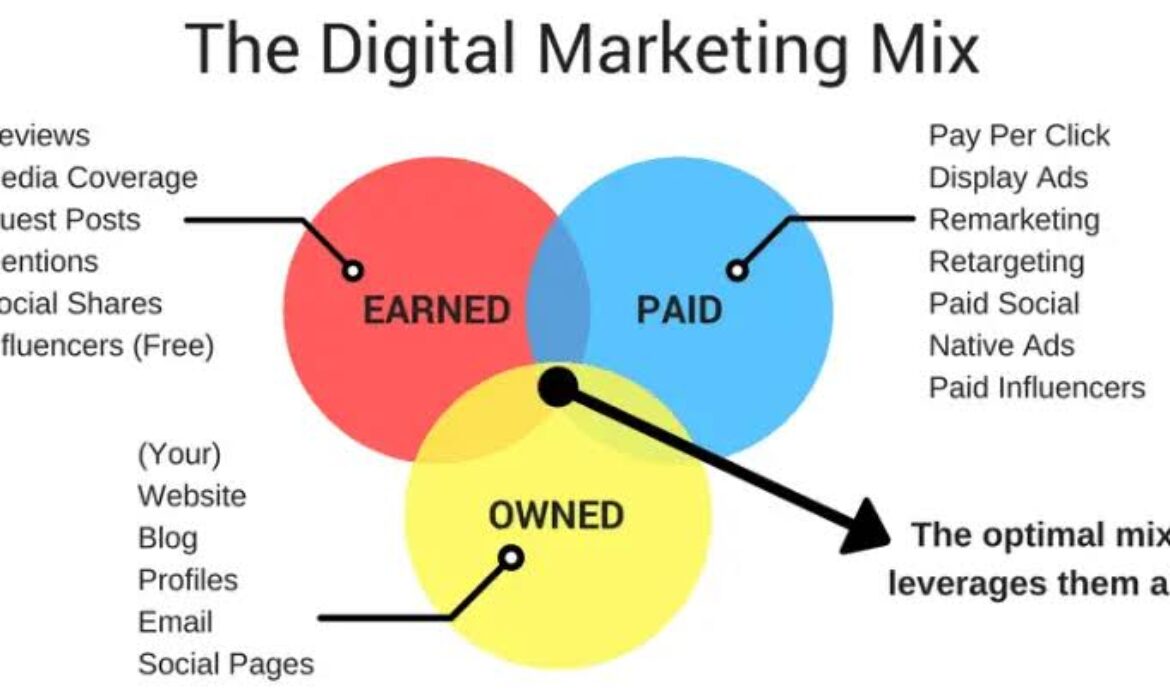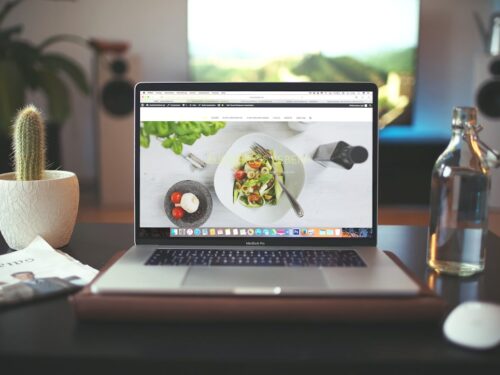081-4797-7173
“Create something that is so good people can’t sleep without talking about you.”
As we all know digital marketing is the practice of reaching consumers online through digital channels to turn them into customers.
A digital channel is any communication method or platform a business can use to reach its target audience.
Digital Marketing helps to sell products or services online. It also helps businesses build trust, inspire loyalty and better serve their customers.
There are a lot of digital channels to pick from when planning strategies and campaigns. From email to social media to video and beyond.
All those channels fit into three main digital media: paid, owned and earned. A strong digital strategy takes advantage of them all.
For your digital marketing to be effective you must understand this trifecta which are earned, owned and paid media.
Go get your snacks as we go deeper into
- What is earned, owned and paid media?
- Their advantages and disadvantages
- Their statistics.
- How you can leverage and use the three media to boost your digital marketing strategies.
- The relationship between the three.
Earned Media
“Earned media coverage is one of the most powerful tools for a brand to encourage customers and credibility.”
Earned media is any positive digital exposure generated through personal or public recommendation. It cannot be owned or paid for; it is generated by customers in response to things like product quality and customer service.
Earned media is public exposure through word of mouth, customer reviews, social media mentions, or media coverage resulting from your content or services’ quality and relevancy.
It is a form of non-paid media exposure that is generated organically, rather than through paid advertising or sponsored content. Earned media is a powerful tool for building brand reputation and credibility because it is often seen as more trustworthy and credible by the target audience than paid media.
Earned media has exploded with the rise of social media and review-based websites that give customers free platforms to share their opinions and ratings. It is also effective because consumers often trust personal recommendations versus advertisements.
Statistics of Earned Media
Here are some statistics about earned media:
- 54% of marketers prioritize earned media for generating leads.
- 41% of marketers emphasize acquiring organic referral traffic from earned media.
- 30% of marketers focus on conversion rates from earned media.
- 85% of marketers prioritize earned media as a supplement to traditional outbound programs.
Advantages of Earned Media
Trust
Earned media often takes a higher level of trust and credibility than paid media, as it’s seen as approval from a trusted source.
Reach
Earned media can reach a large audience through word-of-mouth and social sharing.
Cost-effective
Earned media is generally free or low-cost, making it a cost-effective way to reach your target audience.
Organic growth
Earned media can drive organic growth and build brand awareness, as it’s generated by your customers and fans rather than paid advertising.
Build brand reputation
Earned media can help a brand to build a good reputation among the target audience.
Brand awareness
You can also leverage the social proof and influence of your advocates and partners to amplify your content and create brand awareness.
Disadvantages of Earned Media
Lack of control
With earned media, you have limited power over the message and placement, as it’s generated by customers, fans, and other external sources.
Difficulty in measuring
Earned media can be hard to track and measure, making it challenging to measure the impact and ROI of your earned media efforts.
Unpredictable
Earned media can be unpredictable and difficult to generate, as it depends on the actions and opinions of others.
Negative reviews
Earned media can also include negative reviews and criticism, which can impact your brand and reputation.
“If you make customers unhappy in the physical world, they might each tell 6 friends. If you make customers unhappy on the Internet, they can each tell 6,000 friends.”
Paid Media
“ Paid media is a game of attention, if you can’t capture attention, you can’t capture sales.”
Paid media is exactly any form of digital promotion a brand pays to put online. It is referred to as the various forms of advertising that companies and brands use to promote their products or services.
Examples are paid advertising channels such as television and online display ads, paid search ads, influencer marketing, sponsored content, and more.
Paid media is a way for a brand to reach its target audience by paying for guaranteed placement and exposure on various media platforms. The goal of paid media is to drive engagement, generate leads, and increase sales or conversions.
Statistics of Paid Media
Here are some statistics about paid media:
- In 2024, social media advertising spending is projected to reach $219.8 billion.
- Influencer spending hit $4.14 billion in 2022.
- The minimum average cost of a sponsored YouTube video with 1 million views is $2,500.
- The minimum average cost of an Instagram post with 1 million followers is $1,200.
- The minimum average cost of a TikTok post with 1 million followers is $1,034.
Advantages of Paid Media
Faster Reach
Paid media allows you to reach a large audience quickly and effectively. With targeted advertising, you can reach your specific target audience and generate leads, conversions, and sales.
Speed
Paid media campaigns can be launched quickly, allowing you to quickly respond to market changes and emerging opportunities.
Measurable results
Paid media provides measurable results, permitting you to track your ROI and make data-driven decisions about your marketing strategy.
Flexibility
Paid media offers flexibility, letting you adjust your campaigns in real-time to optimize your results.
Disadvantages of Paid Media
Cost
Paid media can be expensive, especially for competitive keywords and industries.
Ad fatigue
Over-exposure to advertising can lead to ad fatigue, causing clients to tune out your message and reducing the usefulness of your campaigns.
Lack of control
Paid media puts your message in the hands of the platform or publisher, reducing your control over the messaging and placement of your ads.
Inaccurate targeting
Paid media relies on the accuracy of targeting data, which can sometimes be unreliable, resulting in wasted ad spend and ineffective campaigns.
Owned Media
“Owned media is the only media that truly belongs to you.”
“The most powerful media is the media you own.”
Owned media refers to all the digital content a brand fully controls. Owned media content can be persuasive. It does advertise and sell products directly. It provides values. Businesses can bring customers to their content through paid ads and ranking high on SERP pages.
Its goal is to increase brand awareness outside of paid efforts.’“One of the primary goals of owned media strategy is to improve the odds that your site shows up at or near the top of the organic links shown by search engines like Google,”
The main benefit of owned media is that it gives you full authority and flexibility over your content, branding, and messaging. You can also build long-term relationships with your audience, establish your thought leadership, and optimize your content for SEO and conversions.
You can improve your site’s ranking by applying search engine optimization best practices, incorporating valuable keywords in content, and improving the user experience.
Examples are website content, blogs, ebooks, mobile apps, and social media presence on Facebook, X(Twitter), Instagram, LinkedIn etc. Offline-owned media may include brochures or retail stores.
Statistics of OwnedMedia
Here are some statistics about owned media
- 32% of B2B marketers’ budgets are allocated to owned media.
- 39% of marketers reported growth in their owned media budget over the past year.
- 44% of marketers reported an increase in their owned media budget over the past year.
Advantages of Owned Media
Control
Owned media gives you full control over the message, tone, and content of your marketing efforts, allowing you to effectively convey your brand and values to your target audience.
Cost-effective
Owned media is often a low-cost or no-cost way to reach your target audience, making it a cost-effective alternative to paid media.
Building brand identity
Owned media allows you to build your brand identity and differentiate yourself from your competitors, making it a key component of your brand strategy.
Long-term benefits
Owned media has the potential to generate long-term advantages, as it can drive traffic, build brand awareness, and generate leads over time.
Disadvantages of Owned Media
Limited reach
Owned media can have a fixed reach, especially if you have a small audience or limited distribution channels.
Requires resources
Owned media requires resources, including time, manpower, and technical expertise, to create and distribute effectively.
Difficulty in measuring
Owned media can be challenging to track and measure, making it difficult to measure the impact and ROI of your owned media efforts.
Requires ongoing effort
Owned media requires ongoing effort and maintenance, as you must continuously create and distribute new content to keep your audience engaged.
What is the Difference Between Paid, Owned and Earned Media?
Paid media is content you pay to place in front of an audience as an ad or sponsorship, while owned and earned are free. Owned media is content you create and control, like your Facebook page or your website, while earned media is content others create about you, like reviews or Instagram posts.
Relationship between Earned, Paid and Owned Media
Earned media
Earned media is the most credible and trustworthy form of media. It requires building relationships and trust with influencers, media outlets, and customers. Earned media is not guaranteed and requires ongoing effort and quality content and it’s a long-term strategy that builds brand reputation and loyalty
Paid Media
Paid media is a quick way to reach a large audience and drive immediate results. It’s ideal for promoting specific products, services, or campaigns. Paid media requires a budget and can be costly if not managed effectively and it’s a short-term strategy that drives conversions and sales
Owned Media
Owned media is a cost-effective way to reach a targeted audience. It allows for complete control over content and messaging. Owned media requires consistent creation and curation of quality content and it’s a long-term strategy that builds brand awareness and loyalty
In conclusion,
Earned media builds credibility and trust. Paid media drives immediate results and conversions and Owned media provides control and long-term brand-building
A balanced marketing strategy should consider all three types of media to achieve overall marketing goals.







I was recommended this website by my cousin I am not sure whether this post is written by him as nobody else know such detailed about my difficulty You are wonderful Thanks